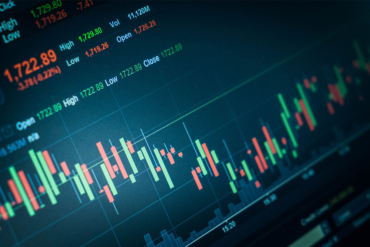In the world of financial markets, investors and traders often rely on various tools and techniques to make informed decisions. One such approach is technical analysis, which involves studying historical price and volume data to predict future price movements. Technical analysis indicators play a crucial role in this process by providing insights into market trends, momentum, and potential reversals. This article explores the world of technical analysis indicators, their types, common examples, and how they can be used effectively in trading.
What are Technical Analysis Indicators?
Definition and Purpose
Technical analysis indicators are mathematical calculations applied to historical price and volume data to identify patterns, trends, and potential trading opportunities. These indicators help traders analyze market behavior and make informed decisions based on the information derived from the data. By understanding the underlying principles of technical analysis indicators, traders gain insights into market sentiment, strength, and potential turning points.
Types of Technical Analysis Indicators
There are numerous technical analysis indicators available to traders, each serving a specific purpose. These indicators can be broadly categorized into different types, including trend-following indicators, momentum indicators, volatility indicators, and volume indicators. Each type offers unique insights into market dynamics and can be utilized based on the trader’s strategy and preferences.
Commonly Used Technical Analysis Indicators
Several technical analysis indicators are widely used by traders and investors to understand market trends and make informed decisions. Let’s explore some of the commonly employed indicators:
Moving Averages
Moving averages are popular trend-following indicators that smooth out price data over a specified period. They help identify the overall direction of a price trend by filtering out short-term fluctuations. The two main types of moving averages are the simple moving average (SMA) and the exponential moving average (EMA).
Relative Strength Index (RSI)
The Relative Strength Index (RSI) is a momentum indicator that measures the speed and change of price movements. It oscillates between 0 and 100, indicating overbought and oversold conditions. Traders often use the RSI to identify potential trend reversals and confirm the strength of existing trends.
Bollinger Bands
Bollinger Bands consist of a middle band (usually a moving average), an upper band, and a lower band. These bands represent the volatility of a security or asset. When the price moves closer to the upper band, it suggests overbought conditions, while moving closer to the lower band indicates oversold conditions. Bollinger Bands help identify potential price breakouts and reversals.
MACD (Moving Average Convergence Divergence)
The Moving Average Convergence Divergence (MACD) is a popular trend-following and momentum indicator. It consists of two lines: the MACD line and the signal line. Traders interpret the MACD line crossing above or below the signal line as potential buy or sell signals. Additionally, MACD histogram bars represent the difference between the MACD line and the signal line, indicating the strength of the current trend.
How to Use Technical Analysis Indicators
Trend Identification
Technical analysis indicators assist in identifying trends in the market. By analyzing moving averages, trendlines, and other trend-following indicators, traders can determine the overall direction of a price trend. This information helps them align their trades with the prevailing market sentiment.
Entry and Exit Signals
Indicators such as RSI and MACD provide signals for potential entry and exit points in trades. Traders often look for oversold or overbought conditions in the RSI to initiate trades, while the MACD line crossing above or below the signal line can signal trend reversals and possible entry or exit points.
Confirmation and Divergence
Technical analysis indicators can also be used to confirm or diverge from other signals or indicators. For example, if a price trend is supported by both moving averages and the RSI, it provides a stronger confirmation of the trend’s validity. Conversely, if indicators provide conflicting signals, it might indicate potential market reversals or uncertainty.
Limitations and Risks of Technical Analysis
While technical analysis indicators can provide valuable insights, it is important to acknowledge their limitations and associated risks. Technical analysis relies on historical data and assumptions, making it susceptible to false signals and unpredictable market events. Additionally, indicators should not be used in isolation but in conjunction with other analysis techniques to reduce the risk of inaccurate predictions.
These indicators serve as powerful tools for traders and investors to gain insights into market behavior and make informed decisions. By understanding different types of indicators and their applications, traders can improve their trading strategies and increase the probability of successful trades. However, it is essential to remember that indicators are not foolproof and should be used alongside other analysis techniques while considering the inherent risks involved.
FAQs
Q1. Can technical analysis indicators guarantee profitable trades? They provide insights into market behavior, but they cannot guarantee profitable trades. Traders should use indicators as part of a comprehensive analysis approach and consider other factors, such as fundamental analysis and risk management.
Q2. How do I choose the right technical analysis indicators for my trading strategy? The choice of indicator depends on various factors, including the trader’s preferred trading style, time horizon, and market conditions. It is advisable to experiment with different indicators and identify those that align with your trading goals.
Q3. Can technical analysis indicators be used for any financial market? Yes, technical analysis indicators can be used in various financial markets, including stocks, commodities, forex, and cryptocurrencies. However, it is important to understand the specific characteristics and dynamics of each market when applying indicators.
Q4. Should I solely rely on technical analysis indicators for trading decisions? While technical analysis indicators offer valuable insights, it is recommended to combine them with other analysis techniques, such as fundamental analysis and market sentiment analysis. This comprehensive approach enhances the accuracy of trading decisions.
Q5. Do I need advanced mathematical knowledge to understand technical analysis indicators? No, traders do not require advanced mathematical knowledge to understand and use indicators. Many platforms and charting tools provide pre-calculated indicators, and there are numerous educational resources available to help traders understand their interpretations.

